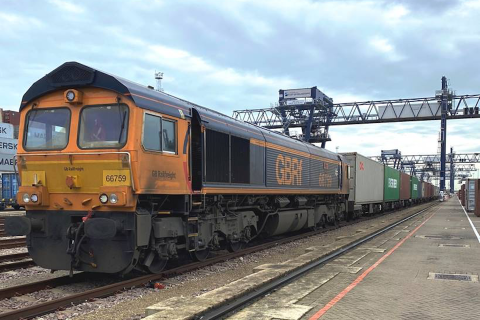Freight railway line in UK’s north not electrified

The electrification of the Transpennine Line, connecting Manchester and Leeds in the north of England will only cover the routes for passenger trains. This means that plans to facilitate freight trains on this railway line have been scrapped for the foreseeable future.
This announcement was made by the Department for Transport (DfT) according to the Yorkshire Post. The rail freight industry had long campaigned for the upgrade of the railway line, which ‘would not only benefit the region but the national economy as a whole’.
Lack of capacity
Transport for the North (TfN), a union of concerned parties in the region explains that the current railway network does not meet up to the demand of the freight transport market. A lack of capacity and long train journeys are the biggest challenges for the industry. As freight trains have to share the tracks with passenger trains, they often have to wait, or operate outside peak hours. Freight journeys of just a hundred miles (160 kilometers) can take more than seven hours.
The electrification of the Trans-Pennine line is supposed to deliver faster journey times and significantly more capacity between Manchester, Leeds and York. When the government announced its plans to resume works on the project in 2015, it wrote that the upgrade was expected to provide capacity for six fast or semi-fast trains per hour and take up to 15 minutes off the journey time between Manchester and York.
Postponed
However, officials have decided that the electrification scheme will be progressed over the next five years without any provision being built in for freight, the UK media source said. A DfT spokeswoman was quoted explaining that the organisation would focus first on those upgrades which would lead to the biggest improvements for passengers.
“The Transpennine Route Upgrade is the biggest planned investment project in the UK on our existing railway. Further upgrades will be considered once we have established what will be delivered first.”
Northern Powerhouse Rail
TfN earlier put together Northern Powerhouse Rail, a “strategic rail programme designed to transform the northern economy and meet the needs of people and business”. With this program, more than forty per cent of businesses identified as having the North’s prime capabilities would be within ninety minutes rail travel of four or more of the North’s largest economic centres, compared with only twelve per cent today, TfN states.
TfN estimates the the plans will cost around two or three billion Pounds per year to implement, but could in the long term boost the economy by 100 million Pounds and create 850,000 new jobs by 2050. It has identified seven strategic development corridors across the north where it will focus on improving transport infrastructure.
You just read one of our premium articles free of charge
Want full access? Take advantage of our exclusive offer





